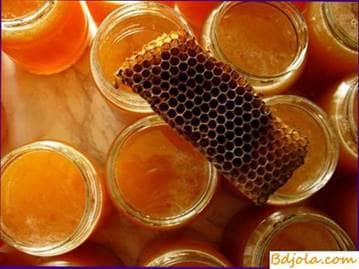 Budykovy honey belongs to first-class honey. It is colorless, greenish, golden (light amber), has a pleasant aroma and taste. During crystallization, it becomes fine-grained. Bees very vigorously collect it from beautiful crimson flowers of a weed with prickly stems and leaves of grayish color – budyaka, or thistle drooping.
Budykovy honey belongs to first-class honey. It is colorless, greenish, golden (light amber), has a pleasant aroma and taste. During crystallization, it becomes fine-grained. Bees very vigorously collect it from beautiful crimson flowers of a weed with prickly stems and leaves of grayish color – budyaka, or thistle drooping.
Домик пасечника. Мед синяковый.
Bee Honey